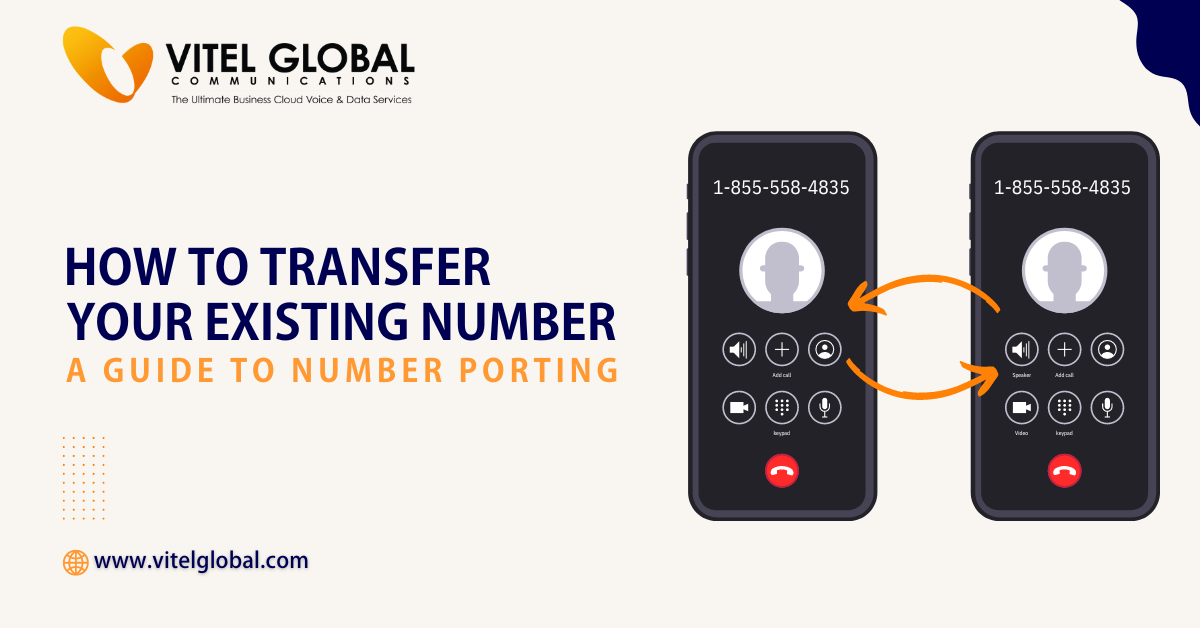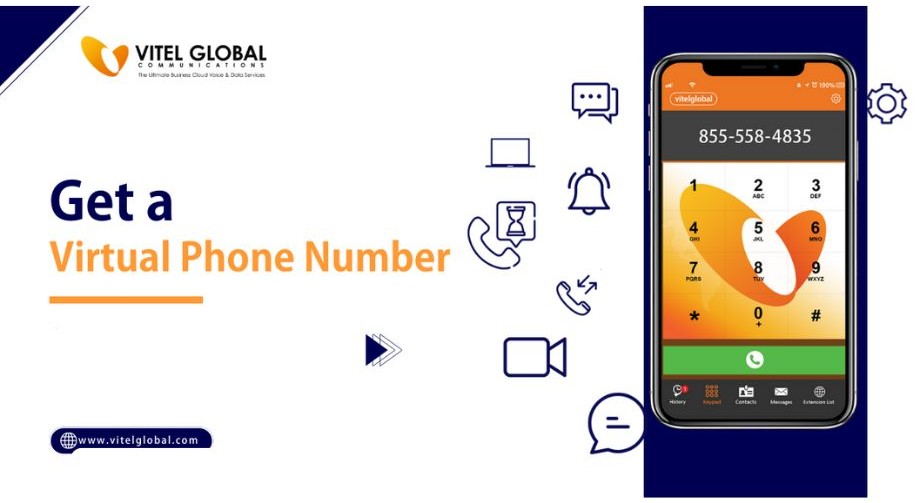How to Set Up a VoIP Number for Your Business: A Practical Guide

12 min read
Table of Contents
VoIP (Voice over Internet Protocol) is a cutting-edge technology that facilitates voice communication over the internet, effectively replacing traditional telephone systems.
This innovative technology converts your voice into digital signals that travel over the internet, allowing for more flexible, cost-effective, and scalable communication solutions compared to conventional telephone networks. VoIP eliminates the need for dedicated phone lines, making it easier for businesses to manage their communications, especially in today’s increasingly remote and mobile work environments. Additionally, VoIP supports a variety of features such as call forwarding, voicemail, video conferencing, and instant messaging, which enhance overall business productivity and customer service capabilities. With the rise of cloud-based VoIP services, setting up and managing your business phone system has become more accessible and user-friendly than ever before.
A VoIP service provider offers a range of features and benefits, including cost savings and increased flexibility.
VoIP systems use internet protocol to transmit voice data, allowing for high-quality phone calls over mobile devices and computers.
VoIP technology is essential for modern business communications, providing a reliable and efficient way to make and receive phone calls.
Benefits of VoIP for Business

- VoIP offers significant cost savings compared to traditional phone systems, with lower rates for long distance and international calls.
- VoIP provides increased flexibility, allowing employees to work remotely and make phone calls from anywhere with a stable internet connection.
- VoIP systems are highly scalable, making it easy to add or remove lines as needed, and supporting business growth and expansion.
- VoIP features, such as call routing and instant messaging, enhance business communications and improve productivity.
Choosing a VoIP Service Provider
- Select a reliable VoIP service provider that meets your business needs, with features such as call recording and video conferencing.
- Consider the provider’s network and infrastructure, ensuring a stable and secure internet connection for high-quality VoIP calls.
- Evaluate the provider’s customer support and technical assistance, ensuring prompt resolution of any issues that may arise.
- Compare pricing plans and features from different providers to find the best fit for your business, including options for toll-free and international numbers.
What Do You Need for a VoIP Setup with Vitel Global?
Setting up VoIP is straightforward, but it’s important to know exactly what you need before getting started.
1. High-Speed Internet Connection
A dependable high-speed internet connection is the foundation of your VoIP phone service. To ensure clear, uninterrupted voice calls, your internet must provide enough bandwidth to handle real-time audio transmission.
Typically, each simultaneous call requires at least 100kbps of upload and download speed.
Most modern broadband plans, including cable or fiber connections, are suitable. However, for optimal call quality, a wired Ethernet connection is recommended over WiFi to reduce interference and packet loss.
2. A Trusted VoIP Service Provider
Partnering with a reliable VoIP service provider like Vitel Global is essential. We host the VoIP platform and manage call routing over the internet.
Our services include assigning new VoIP phone numbers or porting your existing numbers seamlessly. We offer flexible monthly or annual plans tailored to your business size and feature requirements.
3. VoIP-Enabled Devices or Softphones
To place and receive VoIP calls, you’ll need compatible hardware or software:
- IP Phones: These resemble traditional phones but connect via Ethernet to your network.
- Wireless VoIP Headsets: Ideal for mobility within your workspace.
- Softphones: Vitel Global supports softphone applications for computers, tablets, and smartphones (Android and iOS), enabling calls from virtually anywhere with an internet connection.
4. Optional Equipment for Enhanced Performance
Depending on your setup, additional equipment might improve your VoIP experience:
- VoIP-Optimized Routers: While not mandatory, routers with Quality of Service (QoS) capabilities help prioritize voice traffic, enhancing call clarity.
- Analog Telephone Adapters (ATAs): These devices let you use traditional analog phones on your VoIP network by connecting them to your router.
At a minimum, you need a stable internet connection, a Vitel Global VoIP service subscription, and VoIP-capable devices to establish your business phone system. Optional hardware like specialized routers and ATAs offer added flexibility and performance benefits.
7 Simple Steps to Set Up Your VoIP Phone System with Vitel Global
Ready to set up your VoIP phone system? Follow these straightforward steps to get your business communications up and running smoothly with Vitel Global.
1. Verify Your Network Capability
Start by ensuring your internet connection can handle VoIP calls without interruption. Each concurrent call generally needs at least 100kbps upload and download speeds.
Use a reliable speed test to check your bandwidth, and look out for factors like jitter and packet loss that can affect call quality. For best results, connect via wired Ethernet rather than WiFi to reduce interference.
If your office has many users or bandwidth-heavy applications, consider setting up Quality of Service (QoS) on your router to prioritize voice traffic, ensuring crystal-clear calls.
2. Select Appropriate VoIP Hardware
Once your network is ready, choose the right devices for your needs.
Vitel Global supports VoIP desk phones with RJ-45 Ethernet ports that offer a familiar phone experience. Wireless VoIP headsets provide mobility and hands-free convenience.
For premium call quality, consider investing in high-end VoIP desk phones. If upfront costs are a concern, softphone apps on computers or mobile devices offer a cost-effective alternative. Analog Telephone Adapters (ATAs) can also enable you to keep using your existing analog phones with your new VoIP system.
3. Choose a Vitel Global VoIP Service Plan with the Features You Need
Next, pick a Vitel Global VoIP service plan that matches your business requirements.
Look for advanced call routing to direct calls efficiently, along with auto-attendant and interactive voice response (IVR) features to provide a professional caller experience. Analytics and reporting tools help monitor call performance and agent productivity. Many VoIP providers like Vitel Global offer auto-attendant features to greet and route incoming calls.
Our platform integrates seamlessly with popular CRM systems and includes collaboration tools like video conferencing, screen sharing, and team messaging. Security is also a priority, with end-to-end encryption and compliance with data privacy standards.
4. Obtain Your Business Phone Number
When subscribing to Vitel Global’s service, you can either port your existing phone numbers or select new local, toll-free, or vanity numbers that align with your brand identity.
Our expert team manages the porting process efficiently to minimize downtime and ensure a smooth transition.
5. Install and Configure Your VoIP Devices
With your account and phone numbers ready, set up your VoIP hardware or software.
For physical VoIP phones, connect them to your office network via Ethernet cables. Pair wireless headsets through Bluetooth or cables as needed. Install Vitel Global’s softphone applications on your computers and mobile devices, then configure your account using the credentials provided.
6. Conduct Thorough Testing of Your VoIP Lines
Before going live, test your new VoIP phone lines carefully.
Check for clear audio quality without static or echoes, minimal latency for natural conversations, and stable connections without dropped calls. Test during peak usage times to evaluate performance under load.
Verify caller ID functionality by calling diagnostic numbers provided by Vitel Global. If you experience issues, our support resources and team are ready to assist.
7. Train Your Team on Vitel Global’s VoIP Features
Empower your staff to make the most of your new VoIP system by providing training on its features.
From CRM integration with screen pops to custom call routing, voicemail transcription, cloud-based call recording, and video conferencing, our platform offers powerful tools to enhance productivity and customer service. Voicemail transcription converts voicemails into text and can be emailed to users.
Vitel Global is committed to helping your business succeed with easy-to-use, reliable VoIP solutions tailored to your needs. VoIP services can provide chat and SMS capabilities in addition to voice calls.
5 Best Practices to Set Up Your VoIP System with Vitel Global
To ensure your VoIP system operates smoothly and delivers the best performance, consider these essential best practices.
1. Choose VoIP-Optimized Equipment
Invest in VoIP-optimized devices such as desk phones, headsets, and routers designed to prioritize voice traffic. Older equipment may not support the quality and reliability your business needs. Look for devices compatible with Power over Ethernet (PoE), which allows network cables to deliver power, simplifying installation and reducing clutter.
2. Leverage Softphones for Flexibility
While traditional VoIP hardware has its place, using softphone applications can simplify your setup significantly. Softphones run on your existing computers, tablets, or smartphones, connecting directly to Vitel Global’s VoIP service over the internet. This approach reduces hardware costs, speeds up deployment, and gives your team the freedom to make and receive calls from virtually anywhere.
3. Prioritize Security Measures
Protect your business communications by enabling encryption and following VoIP security best practices. Implement firewalls, VPNs, access controls, and keep your device firmware up to date to prevent threats such as toll fraud, eavesdropping, and denial-of-service attacks.
4. Monitor and Optimize Performance
Use Vitel Global’s built-in analytics tools to continuously monitor call quality, usage patterns, and system performance. Regularly analyzing this data helps you identify potential issues early and make informed adjustments to maintain optimal service. Call analytics and reporting tools are often available in VoIP services to monitor performance.
5. Plan for Network Redundancy and Failover
Ensure your VoIP system remains available even during internet outages by setting up network redundancy. This includes having backup internet connections from different providers and configuring automatic failover so calls seamlessly switch to the backup if the primary connection fails.
VoIP Troubleshooting Tips from Vitel Global
After setting up your VoIP system, it’s important to be prepared for common issues and know how to address them effectively.
Use Wired Ethernet Connections
For the most reliable call quality, connect your VoIP devices directly to your router or network switch via Ethernet cables. Wired connections reduce latency, jitter, and packet loss compared to WiFi, which can be prone to interference and congestion.
Configure Quality of Service (QoS)
Set up QoS on your network equipment to prioritize VoIP traffic over other data. This ensures voice packets get the bandwidth they need for clear, uninterrupted calls even when your network is busy.
Test Calls During Different Network Conditions
Perform test calls both during low and peak network usage times to assess call quality under varying conditions. This helps identify performance bottlenecks and ensures your system can handle real-world demands.
Contact Vitel Global Support for Persistent Issues
If you encounter ongoing call quality problems or connectivity issues despite troubleshooting, reach out to Vitel Global’s expert support team. Provide detailed information about the issues so they can assist with network configuration, device compatibility, or other technical concerns.
By following these best practices and troubleshooting tips, your Vitel Global VoIP system will deliver reliable, high-quality business communications that keep your team connected and productive.
Business Communications and VoIP
- VoIP integrates with other business communications tools, such as Google Workspace and video conferencing software, to enhance productivity and collaboration.
- VoIP features, such as call routing and interactive voice response, improve customer service and support, and provide a professional image for your business.
- VoIP systems support remote work and mobile devices, allowing employees to work from anywhere and stay connected with colleagues and customers.
- VoIP provides advanced features, such as call recording and analytics, to help businesses optimize their communications and improve performance. You can customize the features of your VoIP system based on your business needs by configuring your settings after installation.
Types of VoIP Numbers
- Local VoIP numbers have a specific area code and are ideal for businesses with a local presence, and can be used to establish a market presence.
- Toll-free VoIP numbers are free for callers and can be used to encourage customer calls and improve customer service.
- International VoIP numbers allow businesses to establish a global presence and communicate with customers and partners worldwide, and can be used to support international sales and marketing efforts. International VoIP numbers are assigned in one country but used in another, facilitating global communication.
- Non-fixed VoIP numbers can be used on multiple devices and provide increased flexibility for businesses with remote or mobile employees.
Getting a Business Phone Number
- Obtain a new VoIP phone number from your provider, or port an existing number to your new VoIP system, and ensure that it is compatible with your VoIP devices and system.
- Choose a phone number that reflects your business identity and is easy for customers to remember, and consider options for custom or vanity numbers.
- Set up your phone number with features such as call forwarding and voicemail, and ensure that it is configured correctly to receive incoming calls. You may need to configure user extensions, voicemail, and call routing after getting your VoIP number.
- Test your phone number to ensure it is working correctly and make any necessary adjustments, and verify that it is listed correctly in directories and online listings.
Porting an Existing Number
- Porting an existing phone number to your new VoIP system allows you to keep your existing number and avoid disruption to your business, and can be done with the help of your VoIP provider.
- The porting process typically takes a few days to complete, and may require some technical assistance from your provider, and it is essential to ensure that your existing number is compatible with your new VoIP system.
- Porting an existing number can help maintain your business identity and avoid the need to update marketing materials or notify customers of a change, and can also help to minimize disruption to your business operations.
- It is essential to verify that your existing number is eligible for porting and to follow the necessary procedures to ensure a smooth transition, and to test your number after porting to ensure that it is working correctly.
VoIP Features and Add-ons
- VoIP features, such as call recording and video conferencing, can enhance business communications and improve productivity, and can be customized to meet the specific needs of your business.
- Add-ons, such as instant messaging and screen sharing, can provide additional functionality and support collaboration and teamwork, and can be integrated with other business applications and tools.
- VoIP systems can be integrated with other business tools, such as CRM software and Google Workspace, to provide a unified communications solution, and can be customized to meet the specific needs of your business.
- VoIP features and add-ons can be scaled up or down as needed, making it easy to adapt to changing business needs, and can be managed and configured through a web-based interface or mobile app. Many VoIP providers offer online dashboards for configuring and managing your VoIP system easily.
VoIP Security and Reliability
- VoIP systems are secure and reliable, with features such as encryption and firewalls to protect against hacking and eavesdropping, and can be configured to meet the specific security needs of your business.
- A stable internet connection is essential for high-quality VoIP calls, and it is essential to ensure that your internet connection is reliable and secure, and to have a backup plan in place in case of outages or disruptions.
- VoIP providers typically offer technical support and maintenance to ensure system uptime and resolve any issues that may arise, and can provide assistance with configuration, troubleshooting, and repair.
- VoIP systems can be configured to provide redundancy and failover, ensuring that business communications remain uninterrupted in the event of an outage, and can be integrated with other business continuity and disaster recovery plans.
Business Phone System and Plans
- Business phone systems can be customized to meet the specific needs of your business, with features such as auto attendant and call routing, and can be scaled up or down as needed.
- VoIP plans can be tailored to meet the needs of small, medium, or large businesses, with options for toll-free and international numbers, and can be configured to provide a range of features and functionality.
- VoIP providers typically offer a range of plans and pricing options, including monthly or annual subscriptions, and can provide discounts for long-term commitments or volume purchases.
- It is essential to evaluate your business needs and choose a plan that provides the features and functionality you need, and to consider factors such as cost, scalability, and reliability when selecting a VoIP provider and plan.
VoIP Troubleshooting and Support
- VoIP providers typically offer technical support and troubleshooting to resolve any issues that may arise, and can provide assistance with configuration, repair, and maintenance.
- Common issues, such as dropped calls or poor sound quality, can often be resolved by checking the internet connection or adjusting settings, and can be addressed through online resources or technical support.
- VoIP systems can be monitored and maintained remotely, making it easy to identify and resolve issues quickly, and can be configured to provide alerts and notifications in case of problems or outages.
- It is essential to have a plan in place for troubleshooting and support, and to know how to contact your VoIP provider for assistance, and to have a backup plan in place in case of outages or disruptions.
Frequently Asked Questions
Q1: What is a VoIP number and how does it differ from a traditional phone number?
A VoIP number is a phone number that uses Voice over Internet Protocol technology to make and receive calls over the internet, rather than through traditional phone lines. This allows greater flexibility, cost savings, and the ability to use the number on multiple devices without being tied to a physical location.
Q2: What do I need to set up a VoIP number for my business?
To set up a VoIP number, you need a reliable internet connection, a VoIP service provider, and VoIP-enabled phones or VoIP software (softphones). You will also select a phone number, configure user extensions, and set up features like call forwarding and voicemail.
Q3: Can I keep my existing business phone number when switching to VoIP?
Yes, you can port your existing phone number to your new VoIP system. This process is handled by your VoIP provider and helps maintain business continuity without the need to update customers or marketing materials.
Q4: What types of VoIP numbers are available?
Common types include local VoIP numbers with geographic area codes, toll-free numbers that are free for callers, international numbers for global presence, and non-fixed numbers that can be used on multiple devices.
Q5: How can I ensure good voice quality with VoIP calls?
Voice quality depends largely on having a stable and reliable internet connection, preferably wired Ethernet. Using VoIP-optimized devices and configuring your network to prioritize voice traffic can also improve call clarity and reduce dropped calls.
Q6: Are VoIP systems secure?
Yes, modern VoIP systems use encryption and firewalls to protect against hacking and eavesdropping. Choosing a reliable VoIP provider with strong security measures is essential to safeguard your business communications.
Q7: Can VoIP systems integrate with other business tools?
Absolutely. VoIP can integrate with CRM software, Google Workspace, video conferencing tools, and more, providing a unified communication platform that enhances productivity and collaboration.
Q8: What are some key considerations when choosing a VoIP service provider?
Important factors include reliability and call quality, pricing plans, customer support, available features, security measures, and the provider’s network infrastructure. Customer support quality can vary significantly between VoIP providers.
Q9: How long does it take to set up a VoIP number?
Setting up a VoIP number can be done quickly, often within minutes to a few hours depending on the provider and the complexity of your business needs.
Q10: Can small businesses benefit from VoIP technology?
Yes, VoIP is especially beneficial for small businesses as it offers cost savings, scalability, mobility, and access to more advanced features without the need for expensive hardware or complex setups.
Published: June 20th, 2025
Tags:
Subscribe to Our Latest Updates
Get monthly product and feature updates, the latest industry news, and more!





